Step into any room looking sharp and confident—your outfit should do the talking.
Formal attire for guys isn’t just about suits and ties. It’s about fit, style, and knowing how to dress for your body type, so you always look polished for weddings, interviews, or special occasions.
Imagine a tailored suit, a perfectly matched tie, and subtle accessories that complete your look. With the right guidance, you can elevate any outfit and showcase effortless confidence.
Master formal attire for guys today: choose the right suit, get the perfect fit, and finish with smart accessories to stand out with style and confidence.
Here’s What You’ll Learn:
- How to define and understand formal attire for men.
- Key dress codes: business formal, black tie, white tie, and cocktail attire.
- Essential outfit components: suits, shirts, ties, shoes, vests, and accessories.
- Styling tips for every male body type: slim, athletic, rectangular, broad, and oval.
- How to choose fabrics, colors, and patterns that flatter your shape.
- Do’s and don’ts for dressing polished, confident, and occasion-appropriate.
Formal Attire For Men Definition
Formal attire for men refers to clothing worn for events that require a polished, professional, or elegant appearance. It usually includes suits, tuxedos, or tailcoats, paired with dress shirts, ties or bow ties, and dress shoes. The exact outfit depends on the dress code of the event, such as business formal, black tie, or white tie.
In short: formal attire for men is clothing that meets the standards of professionalism or elegance for formal occasions.
Understanding Formal Attire for Guys
Formal events can vary in how strict their dress codes are. Knowing the differences helps you choose the right outfit.
Business Formal
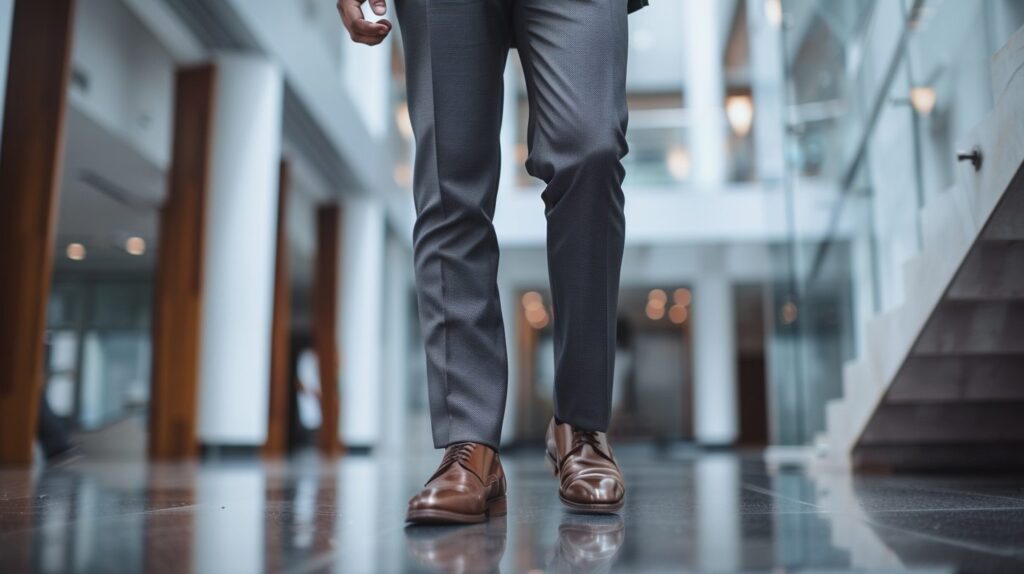
A clean, professional look that shows confidence and preparation. Perfect for interviews, meetings, or business events, it’s completed with a well-fitted suit, crisp shirt, and polished shoes.
White Tie (Ultra Formal)

The most formal dress code, suited for state dinners, formal balls, or high-end weddings. A tailcoat, patent shoes, and all formal details create an elegant, flawless appearance.
Black Tie (Formal)

Classic and timeless, black tie is ideal for evening weddings, galas, or upscale parties. A black tuxedo with a bow tie and formal shoes ensures a sophisticated, refined look.
Creative Black Tie
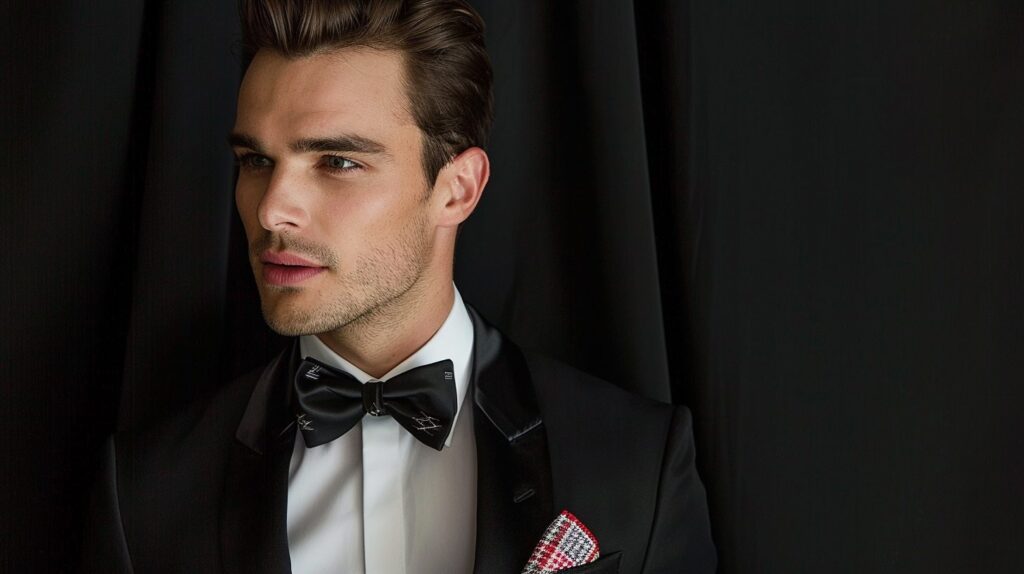
A modern take on traditional formalwear that allows personality through accessories like patterned ties or colorful pocket squares. Perfect for weddings or parties where flair is welcome.
Cocktail Attire
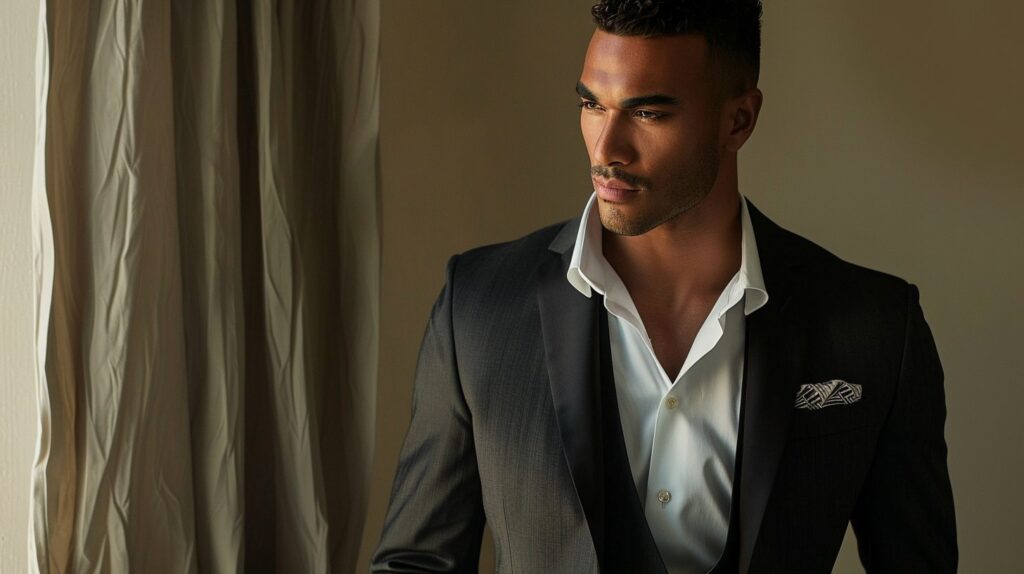
Smart and approachable, cocktail attire works for evening parties or semi-formal gatherings. A dark suit or blazer with a dress shirt keeps you polished, with a tie optional for a relaxed feel.
Essential Components of Formal Attire
Every formal outfit has some key components to get right.
Suit or Tuxedo
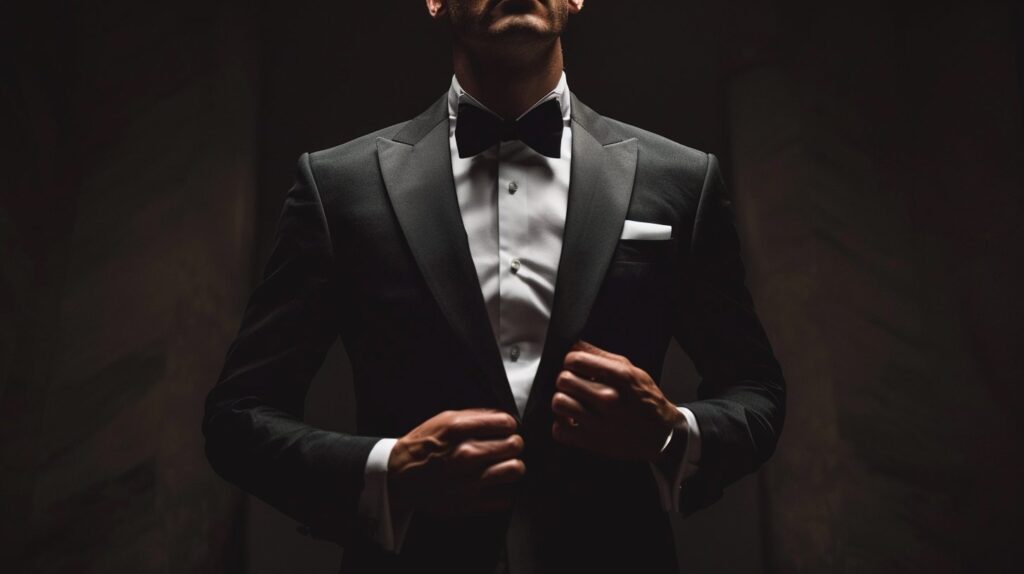
Tailored to your body shape for a clean fit. A well-fitted suit or tuxedo creates a sharp, polished silhouette and ensures you look professional.
Shirts

Crisp, well-fitted shirts in white or light colors. High-quality shirts keep your outfit looking neat and complement any formal jacket.
Ties and Bow Ties
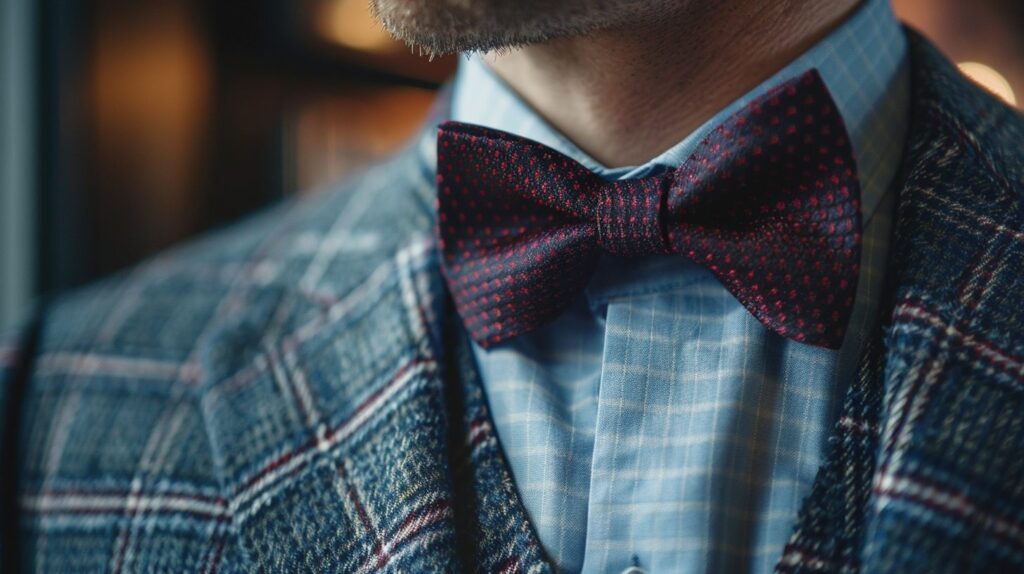
Complement the suit color; slim ties for slim guys, wider ties for larger body types. Ties and bow ties add style and balance to your outfit while showing attention to detail.
Shoes
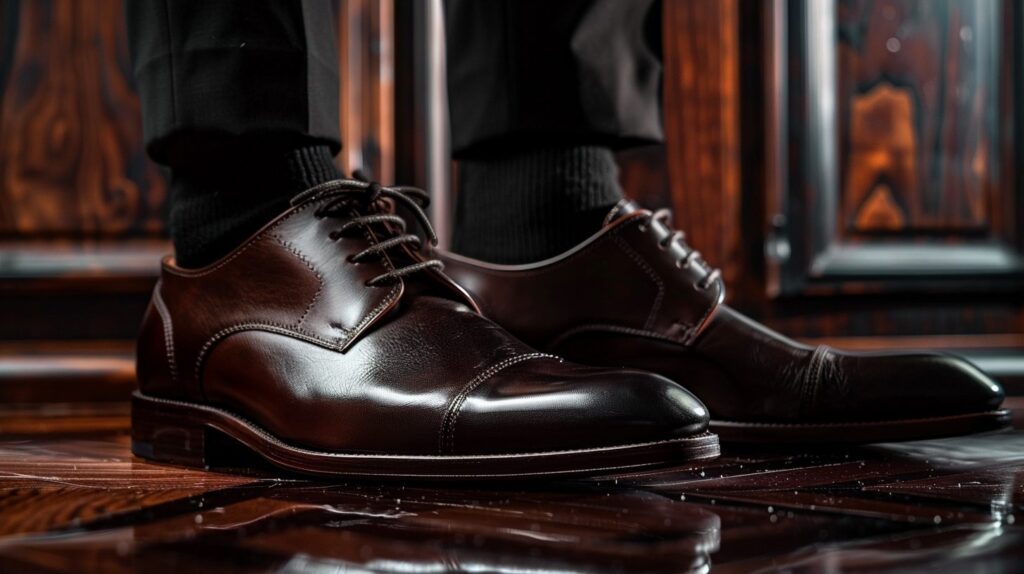
Polished leather shoes, either black or brown depending on the outfit. Clean, shiny shoes complete the look and give a refined, put-together appearance.
Accessories

Watches, cufflinks, pocket squares, and belts that match shoes. Small touches like accessories add personality and elevate the overall formal look.
Vests
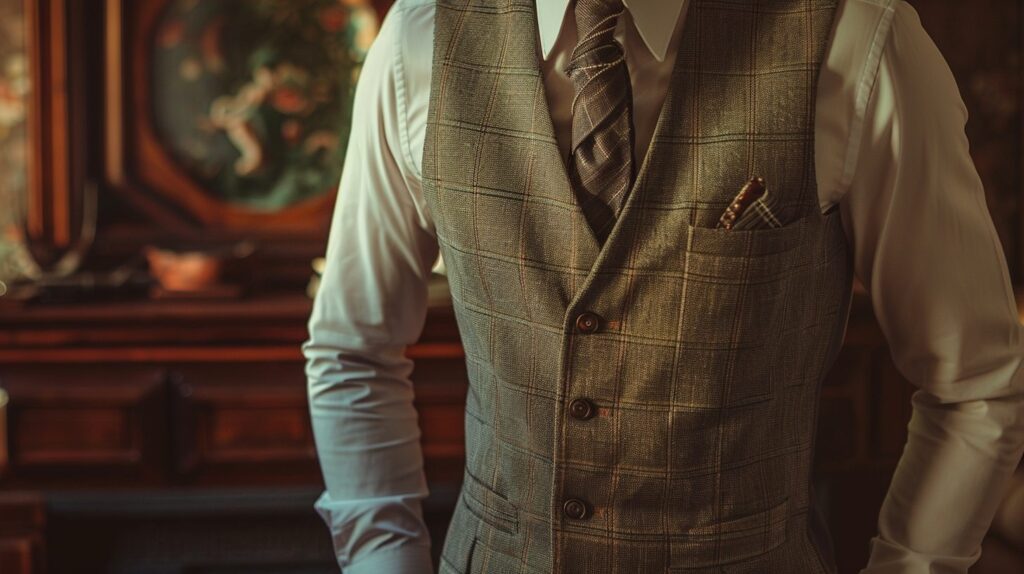
Formal attire for men with a vest adds a layer of sophistication and can help balance body proportions. A vest gives extra structure, enhances style, and makes your outfit feel complete.
Dressing for Special Occasions: Formal Attire for Weddings and Events
Daytime Weddings
Light-colored suits or semi-formal attire for men, such as gray or blue, paired with subtle ties. These colors keep your look fresh and appropriate for daytime events while remaining elegant.
Evening Weddings
Dark suits or black tie attire. Darker colors create a more formal and sophisticated appearance suitable for evening celebrations.
Christmas Parties
Festive accessories and patterns are acceptable; formal attire for men can include colored ties or elegant vests. Adding a touch of holiday flair makes your outfit festive while still polished.
Job Interviews
Neutral colors like navy or charcoal, paired with simple ties; formal attire for men ensures professionalism. A clean, conservative look helps make a strong first impression and shows respect for the opportunity.
Understanding Male Body Types
Different body types require different styling approaches to ensure your formal clothes for guys look their best.
Slim / Skinny Body Type
Key Features of Slim Shape
Men with a slim body type usually have narrow shoulders, chest, and waist, with a lean frame. This shape can sometimes appear delicate or underwhelming in heavier fabrics. The main goal is to create visual bulk and add dimension to your silhouette.
Styling for Slim Body Type
Focus on adding structure to the shoulders and chest, layering pieces, and using textures to create a fuller appearance. Patterns, fabrics with some thickness, and structured jackets help balance proportions.
Clothing Recommendations and Styling Tips for Slim Shape
- Top Choices: Structured blazers, layered shirts under vests or sweaters, jackets with shoulder padding. Subtle patterns and textured fabrics add depth.
- Bottom Choices: Slim-fit trousers that are not too tight, avoiding baggy pants that swallow the frame.
- Avoid: Overly loose or shapeless clothing that makes you look even thinner.
Athletic / Muscular Body Type
Key Features of Athletic Shape
Men with an athletic body have broad shoulders, a defined chest, and a narrower waist. This V-shaped torso is naturally proportional but requires clothing that highlights strength without restricting movement.
Styling for Athletic Body Type
Clothing should follow the body’s natural lines. Tailored cuts, slight tapering at the waist, and flexible fabrics emphasize shape while allowing comfort.
Clothing Recommendations and Styling Tips for Athletic Shape
- Top Choices: Fitted or tailored shirts, flexible suits, single-breasted jackets.
- Bottom Choices: Slightly tapered trousers that follow the leg line without being tight.
- Avoid: Oversized or boxy jackets that hide the shape, baggy trousers, and stiff fabrics that restrict movement.
Rectangular / Straight Body Type
Key Features of Rectangular Shape
Men with a rectangular body have shoulders, waist, and hips roughly the same width. The figure appears linear, often seen on taller, slimmer frames. The goal is to create a defined waist and add visual interest to the upper body.
Styling for Rectangular Body Type
Use layering and structured jackets to broaden shoulders and create a waistline. Vertical patterns and belts can help define the torso.
Clothing Recommendations and Styling Tips for Rectangular Shape
- Top Choices: Structured blazers, fitted jackets with slight shoulder padding, layered shirts or vests. Patterns across the chest can enhance the upper body.
- Bottom Choices: Straight-fit or slim-fit trousers to maintain proportion without adding width.
- Avoid: Boxy or untapered jackets that emphasize the straight frame.
Big / Broad / Chubby Body Type
Key Features of Broad Shape
Men with a big or broad body have wider shoulders and chest, often with extra mass around the waist. Clothing should slim the silhouette and highlight the upper body subtly.
Styling for Broad Body Type
Dark colors, vertical lines, and structured shoulders help elongate the body and create a cleaner appearance. Single-breasted jackets are preferable to avoid extra bulk.
Clothing Recommendations and Styling Tips for Broad Shape
- Top Choices: Dark-colored suits, single-breasted jackets, structured blazers, and vests to streamline the torso.
- Bottom Choices: Straight-cut trousers in dark tones to balance proportions.
- Avoid: Loud patterns, double-breasted jackets, or tight-fitting clothes that exaggerate width.
Oval / Round / Fat Body Type
Key Features of Oval Shape
Men with an oval or round shape carry more weight around the midsection. The main goal is to elongate the torso, draw attention upward, and create a balanced silhouette.
Styling for Oval Body Type
Vertical lines, dark colors, and V-neck layers help slim the appearance. Clothing should fit well without clinging to the midsection.
Clothing Recommendations and Styling Tips for Oval Shape
- Top Choices: V-neck waistcoats, vertical pinstripes, well-fitted blazers.
- Bottom Choices: Straight-cut or slightly tapered trousers in dark colors to streamline the lower body.
- Avoid: Double-breasted jackets, short jackets, baggy or overly tight clothing that adds bulk.
General Tips for Choosing the Right Outfit for Any Body Shape
Prioritize Fit Over Fashion
The most important factor in looking polished is how your clothes fit. Even expensive or trendy outfits will look off if they don’t fit properly. Make sure jackets, shirts, and trousers follow your natural body lines without being too tight or loose.
Invest in Tailoring
A small adjustment, like shortening sleeves, tapering trousers, or taking in a waist, can transform your outfit. Tailoring ensures clothes fit your body perfectly and elevates your overall appearance.
Stick to Solid Colors or Subtle Patterns
Neutral and solid colors like navy, gray, or black are universally flattering and easy to mix. Subtle patterns like thin stripes, small checks, or textured fabrics add interest without overwhelming your frame.
Choose Fabrics That Flatter Your Body Type
- Slim / Skinny: Use textured or layered fabrics to add bulk.
- Athletic / Muscular: Flexible and stretchable fabrics provide comfort while following your shape.
- Big / Broad / Oval: Medium-weight, draping fabrics prevent adding extra bulk.
Accessorize Wisely
Accessories like watches, ties, pocket squares, belts, or cufflinks should complement your outfit. Avoid oversized or flashy pieces that can throw off proportions.
Layer Strategically
Layering adds depth and helps balance proportions. For example, slim guys can add a vest under a blazer, while rectangular or broad frames can use a structured jacket over a shirt to create definition.
Match Shoes and Belts to Your Outfit
Shoes and belts should coordinate in color and style with your overall outfit. Dark shoes with dark suits or polished leather options generally work best.
Choose Occasion-Appropriate Clothing
Even if a style looks great on you, make sure it matches the event. Semi-formal attire like a blazer and dress pants is ideal for networking events, while a full suit or tuxedo is expected at weddings and formal dinners.
Do’s and Don’ts for Dressing Different Male Body Types
| Body Shape | Key Features | Style Goals | Best Clothing Choices | Avoid |
| Slim / Skinny | Narrow frame | Add bulk | Layered suits, structured blazers | Baggy clothes |
| Athletic / Muscular | Broad shoulders, narrow waist | Highlight strength | Tailored shirts, flexible suits | Boxy jackets |
| Rectangular | Straight torso | Define waist | Two-button suits, vests | Shapeless jackets |
| Big / Broad | Large torso | Slim silhouette | Dark suits, single-breasted jackets | Loud patterns, tight clothes |
| Oval / Round | Rounded torso | Lengthen torso | V-neck waistcoats, vertical stripes | Double-breasted suits |
Final Thoughts
Choosing the right outfit isn’t just about following trends; it’s about understanding your body and wearing formal wear for guys that fits well and boosts confidence. From business meetings to weddings and parties, knowing your dress codes, key components of formal attire, and styling tips for your body type ensures you always look polished. Remember, investing time in finding the right suit, shirt, or vest will pay off every time you step out in style.

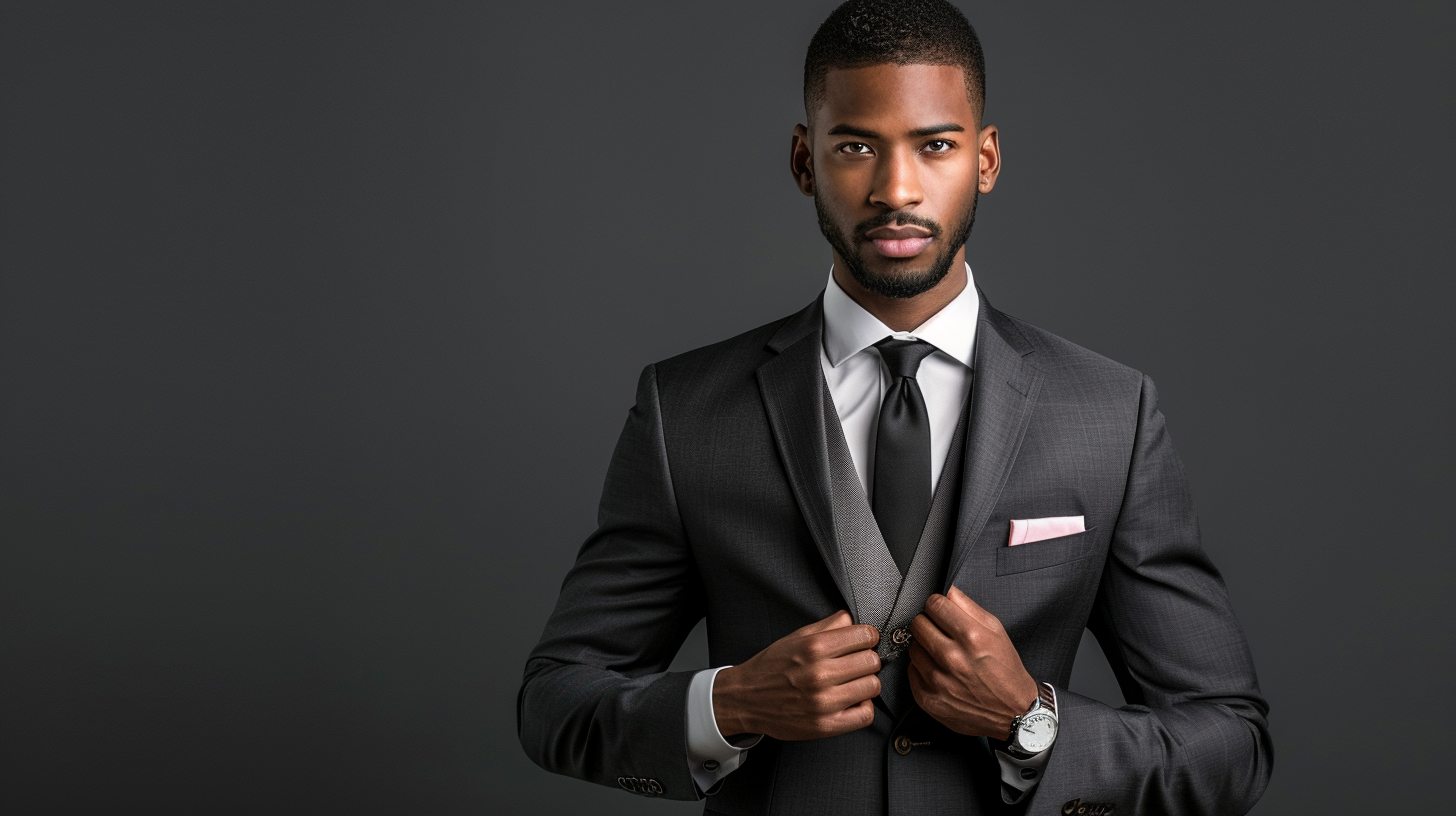
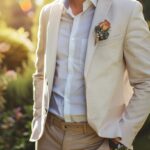
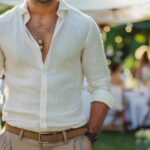

Leave a Reply